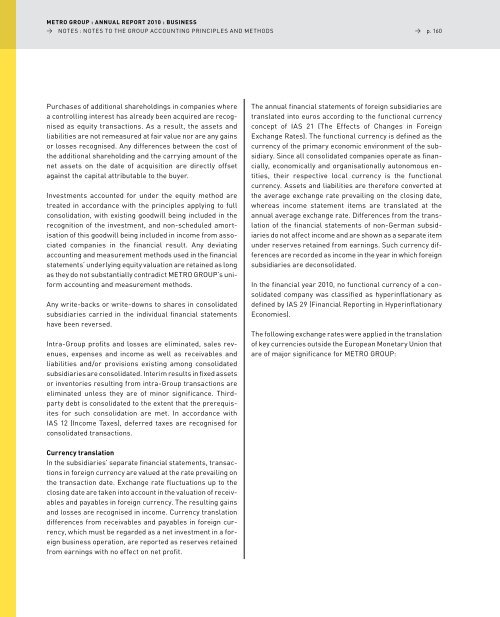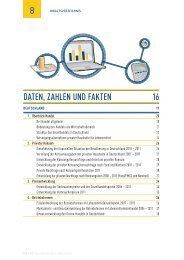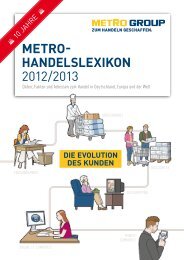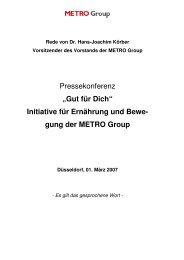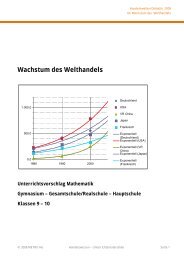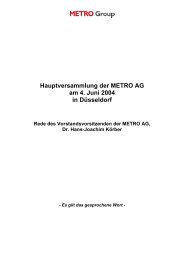pdf (2.5 MB) - METRO Group
pdf (2.5 MB) - METRO Group
pdf (2.5 MB) - METRO Group
You also want an ePaper? Increase the reach of your titles
YUMPU automatically turns print PDFs into web optimized ePapers that Google loves.
<strong>METRO</strong> GROUP : ANNUAL REPORT 2010 : BUSINESS<br />
→ NOTES : NOTES TO ThE GROuP ACCOuNTING PRINCIPlES ANd METhOdS<br />
Purchases of additional shareholdings in companies where<br />
a controlling interest has already been acquired are recognised<br />
as equity transactions. As a result, the assets and<br />
liabilities are not remeasured at fair value nor are any gains<br />
or losses recognised. Any differences between the cost of<br />
the additional shareholding and the carrying amount of the<br />
net assets on the date of acquisition are directly offset<br />
against the capital attributable to the buyer.<br />
Investments accounted for under the equity method are<br />
treated in accordance with the principles applying to full<br />
consolidation, with existing goodwill being included in the<br />
recognition of the investment, and non-scheduled amortisation<br />
of this goodwill being included in income from associated<br />
companies in the financial result. Any deviating<br />
accounting and measurement methods used in the financial<br />
statements’ underlying equity valuation are retained as long<br />
as they do not substantially contradict <strong>METRO</strong> GROuP’s uniform<br />
accounting and measurement methods.<br />
Any write-backs or write-downs to shares in consolidated<br />
subsidiaries carried in the individual financial statements<br />
have been reversed.<br />
Intra-<strong>Group</strong> profits and losses are eliminated, sales revenues,<br />
expenses and income as well as receivables and<br />
liabilities and/or provisions existing among consolidated<br />
subsidiaries are consolidated. Interim results in fixed assets<br />
or inventories resulting from intra-<strong>Group</strong> transactions are<br />
eliminated unless they are of minor significance. Thirdparty<br />
debt is consolidated to the extent that the prerequisites<br />
for such consolidation are met. In accordance with<br />
IAS 12 (Income Taxes), deferred taxes are recognised for<br />
consolidated transactions.<br />
Currency translation<br />
In the subsidiaries’ separate financial statements, transactions<br />
in foreign currency are valued at the rate prevailing on<br />
the transaction date. Exchange rate fluctuations up to the<br />
closing date are taken into account in the valuation of receivables<br />
and payables in foreign currency. The resulting gains<br />
and losses are recognised in income. Currency translation<br />
differences from receivables and payables in foreign currency,<br />
which must be regarded as a net investment in a foreign<br />
business operation, are reported as reserves retained<br />
from earnings with no effect on net profit.<br />
→ p. 160<br />
The annual financial statements of foreign subsidiaries are<br />
translated into euros according to the functional currency<br />
concept of IAS 21 (The Effects of Changes in foreign<br />
Exchange Rates). The functional currency is defined as the<br />
currency of the primary economic environment of the subsidiary.<br />
Since all consolidated companies operate as financially,<br />
economically and organisationally autonomous entities,<br />
their respective local currency is the functional<br />
currency. Assets and liabilities are therefore converted at<br />
the average exchange rate prevailing on the closing date,<br />
whereas income statement items are translated at the<br />
annual average exchange rate. differences from the translation<br />
of the financial statements of non-German subsidiaries<br />
do not affect income and are shown as a separate item<br />
under reserves retained from earnings. Such currency differences<br />
are recorded as income in the year in which foreign<br />
subsidiaries are deconsolidated.<br />
In the financial year 2010, no functional currency of a consolidated<br />
company was classified as hyperinflationary as<br />
defined by IAS 29 (financial Reporting in hyperinflationary<br />
Economies).<br />
The following exchange rates were applied in the translation<br />
of key currencies outside the European Monetary union that<br />
are of major significance for <strong>METRO</strong> GROuP:


